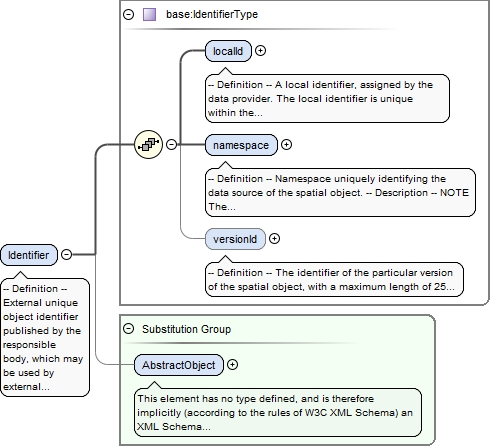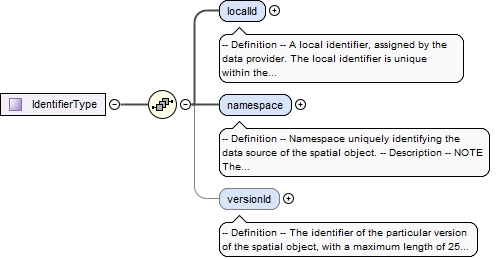| Namespace | http://inspire.ec.europa.eu/schemas/base/3.3 | ||||
|
Annotations
|
|
||||
|
Diagram
|
 |
||||
| Type | base:IdentifierType | ||||
|
Properties
|
|
||||
| Substitution Group Affiliation | |||||
|
Used by
|
|
||||
| Model | |||||
| Children | base:localId, base:namespace, base:versionId | ||||
|
Instance
|
|
||||
|
Source
|
|




